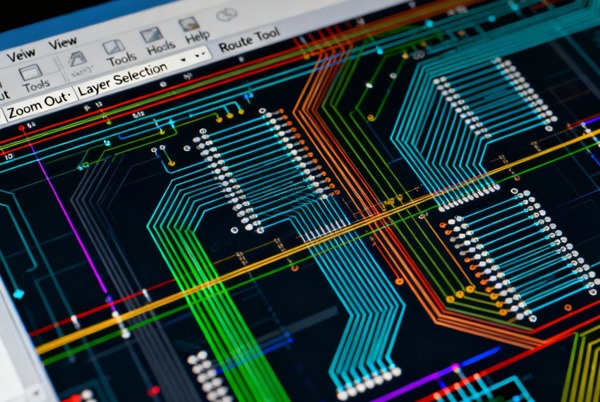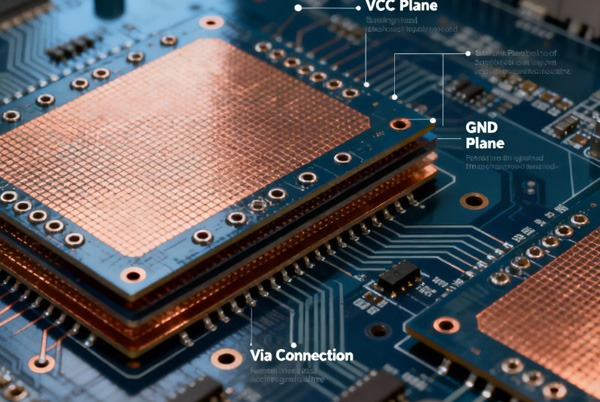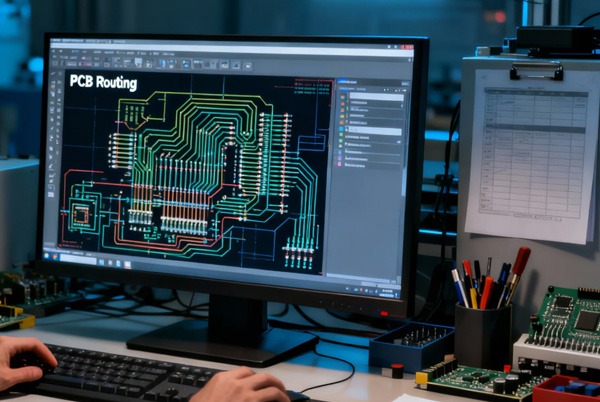In high-speed PCB design, signal integrity is one of the primary challenges engineers face. The 3W principle, as an effective routing strategy, can significantly reduce crosstalk issues and ensure stable circuit operation.
Table of Contents
The Core Definition of the 3W Principle
What is the 3W Rule?
The 3W rule is a fundamental guideline in PCB routing that requires the center-to-center spacing between adjacent signal traces to be no less than 3 times the trace width. Specifically, if the signal trace width is W, then the center distance between two parallel traces should satisfy L ≥ 3W, resulting in an edge-to-edge spacing of 2W.
Physical Basis of the 3W Rule
Crosstalk is primarily caused by parasitic capacitance and mutual inductance between traces. According to the capacitance formula C = εS/d, where:
- C represents the parasitic capacitance between traces
- ε is the dielectric constant
- S is the relative conductor area
- d is the distance between conductors
Increasing the trace spacing (d) directly reduces parasitic capacitance, thereby lowering crosstalk. The strength of the electric field coupling decays exponentially with increasing distance. Experiments prove that a spacing of 3 times the trace width can isolate over 70% of electric field interference, while a 10 times spacing can reduce crosstalk by up to 98%.
Practical Application and Limitations of the 3W Rule
Application Scenarios
The 3W rule primarily applies to the following sensitive signal traces:
- High-frequency clock signals
- High-speed data buses (e.g., DDR, PCIe)
- Differential signal pairs
- Video and audio signal lines
- System reset and control lines
Effectiveness Evaluation and Limitations
- Effectiveness: 3W spacing reduces crosstalk by approximately 70%, while 10W spacing can reduce nearly 98%
- Limitations: The 3W rule holds under 50-ohm characteristic impedance conditions, and its effectiveness is significantly influenced by stackup structure:
- Four-layer board (5-10mil spacing between trace and reference plane): 3W is usually sufficient
- Two-layer board (45-55mil spacing between trace and reference plane): 3W might be insufficient, and increased spacing may be needed

Complementary Design Strategies to the 3W Rule
Guard Traces
For particularly sensitive signal traces, guard trace design can be employed—placing ground traces on both sides of the signal trace and connecting them to the reference plane via ground vias. This method effectively absorbs crosstalk signals and may allow for some relaxation of the 3W spacing requirement in certain cases.
Combination with 20H Rule
To address power plane edge radiation issues, the 20H rule can be applied—insetting the power plane by 20 times the dielectric thickness can suppress 70% of edge flux leakage, working synergistically with the 3W rule to reduce overall EMI.
Differential Signal Design
For high-speed differential pairs, in addition to spacing control, ensure:
- Strict length matching (typically <5mil deviation)
- Consistent impedance control
- Symmetrical routing approach
Flexible Application and Adjustment of the 3W Rule
Dynamic Spacing Adjustment
3W is an empirical value rather than an absolute rule. Actual spacing should be adjusted based on:
- Signal rate: Signals ≥500MHz may require 4W or 5W spacing
- Dielectric material: Different dielectric constants affect crosstalk levels
- Impedance requirements: Specific impedance matching may influence optimal spacing
Consideration of the 3H Rule
When the trace layer is far from the reference plane, consider the 3H rule—trace spacing should not be less than 3 times the distance from the trace layer to the reference plane. This focuses more on electric field coupling control, complementing the 3W rule (which emphasizes magnetic field coupling).
Design Verification and Simulation
Simulation Necessity
After routing completion, verification through professional simulation tools is essential:
- Crosstalk analysis
- Signal integrity check
- Impedance continuity evaluation
Practical Test Case
A 5G router design case showed that by increasing the spacing between RF and Ethernet signals from 0.8mm to an equivalent 1mm, combined with grounded copper isolation, the design successfully passed EMI test standards.

Common Issues and Solutions
Does the 3W Rule Apply to All Traces?
No. The 3W rule primarily targets long-distance routing of high-speed signals. For low-speed signals or short-distance traces, requirements can be appropriately relaxed to improve routing density.
How to Compromise When Space is Limited?
When board space is constrained, consider:
- Reducing spacing for non-critical signals
- Using guard traces instead of increasing spacing
- Optimizing stackup structure to reduce distance from traces to reference plane
Balancing the 3W Rule and Impedance Control
In areas with strict impedance control, adjusting 3W spacing might be necessary to meet impedance requirements. Simulations should determine the optimal compromise solution in such cases.
Conclusion
The 3W principle is a vital tool in the PCB design engineer’s toolbox, but it is not a universal solution. Successful routing design requires a comprehensive consideration of signal characteristics, board layer structure, impedance requirements, and EMC objectives, integrating the 3W principle with other design strategies such as ground planes, the 20H rule, and differential pair design. Only through an iterative process of theoretical analysis, simulation verification, and practical testing can an optimal balance be achieved between signal integrity, EMC performance, and manufacturing costs.
